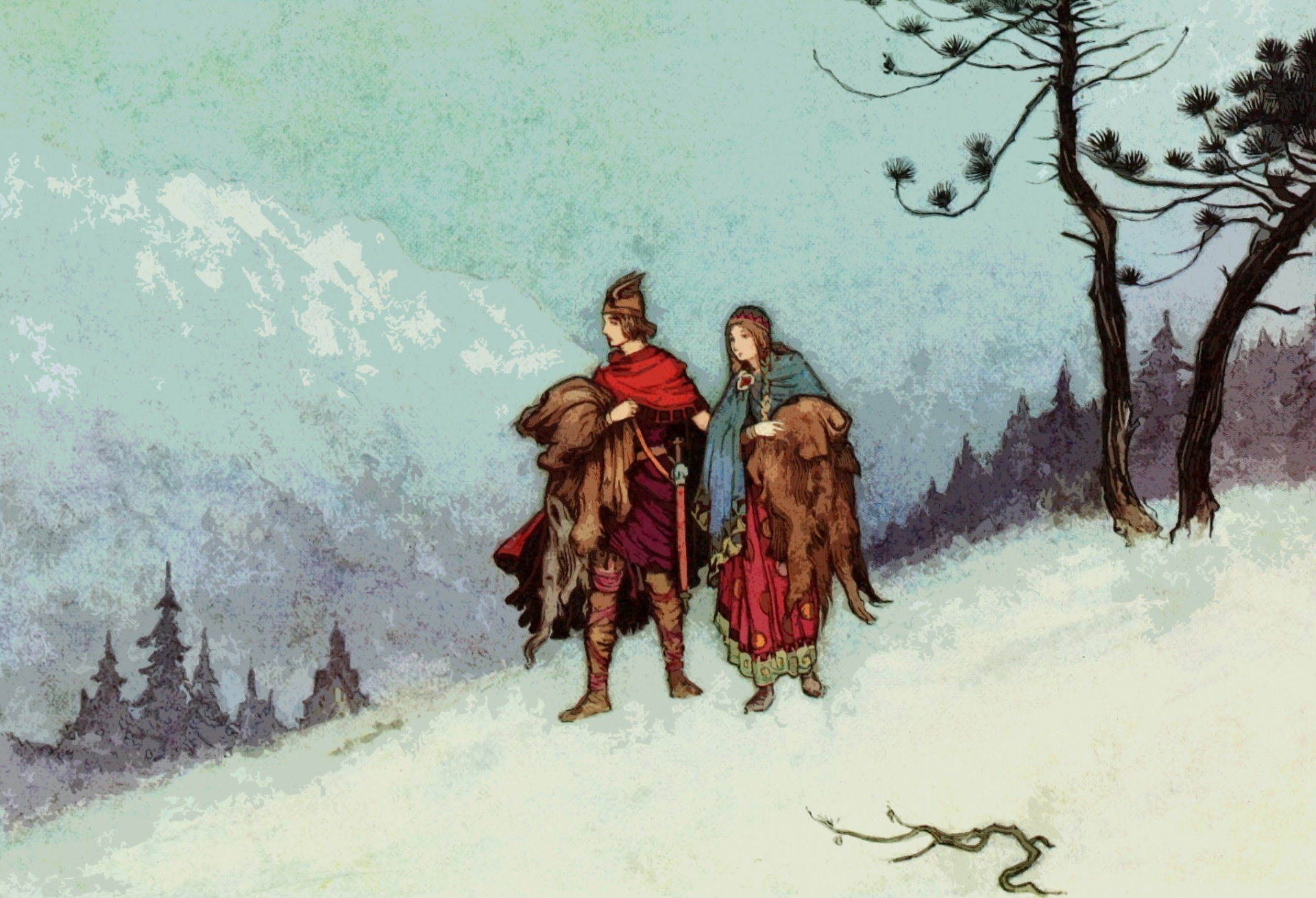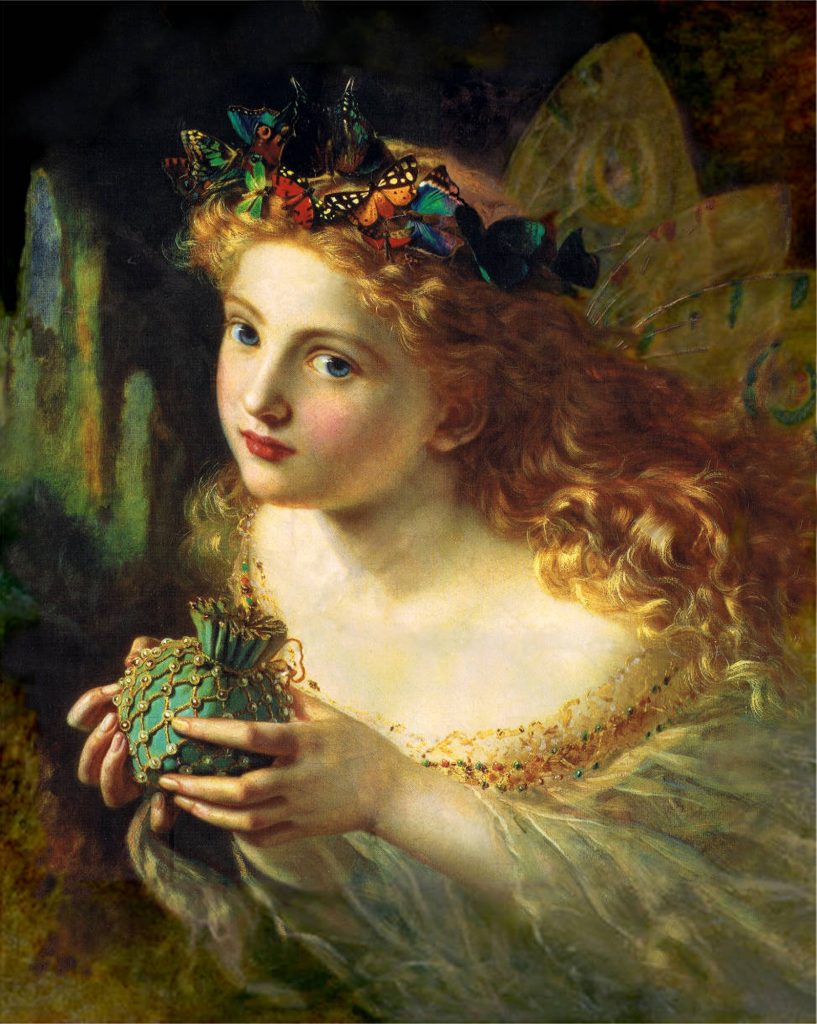The History of Iceland’s Love Affair with Invisible Elves

In December 2013, Ragnhildur Jónsdóttir petitioned the Icelandic government. She wanted to stop construction of a road passing through the Gálgahraun lava field outside Reykjavík. The reason? An ancient church lay in the path of the construction. Jónsdóttir believed disturbing it would cause negative, and possibly harmful consequences. For the average passer-by, however, the church wasn’t so easy to spot. Towering spires, stained glass windows, and flying buttresses could not be seen anywhere across the landscape. In fact, there wasn’t a building of any sort. You see, the church was contained inside the volcanic rock and owned by the local elves.
This wasn’t the first time construction was put on hold in the small Nordic country. After all, according to folklore, Iceland was first settled by spirits, both good and bad. When the island’s first human inhabitants entered the scene, it was with the understanding the elves were allowing them to share the land as an act of benevolence. You can see why having respect for their landmarks is the courteous thing to do.
Iceland Loves their Elves
Although these fairy creatures make their appearance in other Scandinavian countries, Iceland seems to have a particular attachment. In fact, the former Icelandic president, Ólafur Ragnar Grímsson once remarked:
“Icelanders are few in number, so in the old times we doubled our population with tales of elves and fairies.”
That’s certainly a vote for the elves, but Árni Johnsen, a member of parliament has that beat. He claims a family of elves saved him after a car accident in 2010. It may sound odd that two prominent members of government would talk about elves. However, in a country where around 50 percent of the citizens at least agree their existence is a possibility, well suddenly it’s not so odd.
There’s No Place Like Home
Elves first appeared in Icelandic literature around 1000 AD. The writer, scholar, and historian Snorri Sturluson wrote about Elves in stories known as Eddas. Snorri wasn’t the only one talking about elves, however. Skaldic poetry was court poetry developed by Icelandic poets between the 9th and 13th centuries. Although contemporary with the Eddas, they were written in a completely different style. Elves are also referred to in the Poetic Eddia (not written by Snorri) as well as other writings.
Ragnhildur Jónsdóttir’s rock-dwelling elves are a specific type known as Huldufólk or Hidden people. There are two possibilities for the origins of the Huldufólk. One story says back in the garden of Eden, Eve was in the process of washing her children. God, in a moment of spontaneity, came down for a visit. Since some of her offspring were still unclean, she hid them from his view. Not wanting to look the sluggard, she lies. “Certainly they are all here,” she tells God. Of course, God knew the truth and as punishment, he declares what is hidden from him shall forever remain hidden from man.
Another story says the Huldefolk were a group of angels who tried to remain neutral when St. Michael led the battle against Lucifer in heaven. Since they refused to commit to either side, they were cast down to the earth where they were forced to live in the rocks and hills.
Not your average elves
Whatever their origins, it’s certain the Huldufólk developed out of the imagination of a people who lived in extreme conditions. Life on the fringe of the arctic circle was harsh and lonely. Violent winter storms, earthquakes, and volcanic eruptions were part of life. No wonder they projected their hopes and desires onto the people of their imagination.
Because of this, Huldufólk aren’t your typical work-for-Santa type elves. They live in rocks and hillsides in beautifully decorated houses and dress in fashionable clothing. They farm and raise livestock, just like their human counterparts, but with better and more abundant results. Of course, on top of it all, they had other-world powers like seeing the future and becoming invisible. Basically they are everything early settlers were not.
Christmas with the Huldufólk
Stories of Huldufólk making mischief on Christmas Eve have been developing for centuries. The 13th-century Eyrbyggja Saga is the earliest surviving version. In this story, an assortment of ghost take over a farm in Fróðá. By the 19th-century, however, the ghosts have morphed into Huldufólk.
In these stories, the elves were usually holding their Christmas festivities at a farmhouse owned by mortals. Details vary, but mostly they’re about someone who has to stay home on Christmas Eve while everyone else gets to go to midnight Mass. Apparently the elves don’t like this idea and have a bad habit of killing anyone who hangs around uninvited.
Christmas on the Farm
One version, Christmas Eve in Kasthvammur, tells about a farm where this exact thing has happened several years running until people stopped volunteering. Finally, a brave soul agrees to stay. He settles himself down with a book and waits to see what will happen. All is well until he starts hearing noises. When the horrible scuffling and shouting moves into the living room, our hero decides the best course of action is to hide.
The elves, thinking no one is home, turn on the lights, set the tables and bring out the food and decorations. They dance and make merry until the hidden man suddenly makes his presence known. The startled elves are unable to retaliate and disappear into the rocks. The victorious man is now the one celebrating, and he helps himself to a tasty snack, courtesy the elves leftovers. From this point on the farm is known as Kasthvammur or shock hvammur because of the terrible shock the elves had .
Elves and Queens
Not all stories involve crazy killer elves. Hildur Queen of the Elves is one famous example. This story is about a woman who shows up at a farm looking for work. Luckily, she’s a good worker and since everyone likes her they allow her to stay until Christmas.
In the middle of the night on Christmas Eve, she sneaks out followed by one of the farm workers. A magical bridge suddenly appears out of nowhere. She crosses and enters a beautiful castle. From his hiding place, the farm worker watches as she comes out in resplendent clothing and in the company of a man and child. The little family go to Mass and are obviously distraught when she must depart back to the farm. The next day the man confronts the woman only to find out she is an enchanted elf queen under a spell. I won’t tell you how it ends, you can read an old 1864 version of it for free here.
If you like the story and are in need of a last-minute gift, check out these!
AND these two about Icelandic folk tales in general look really good as well!
Merry Christmas!
Notes and Sources:
Amazon links are affiliate links







Leave A Comment